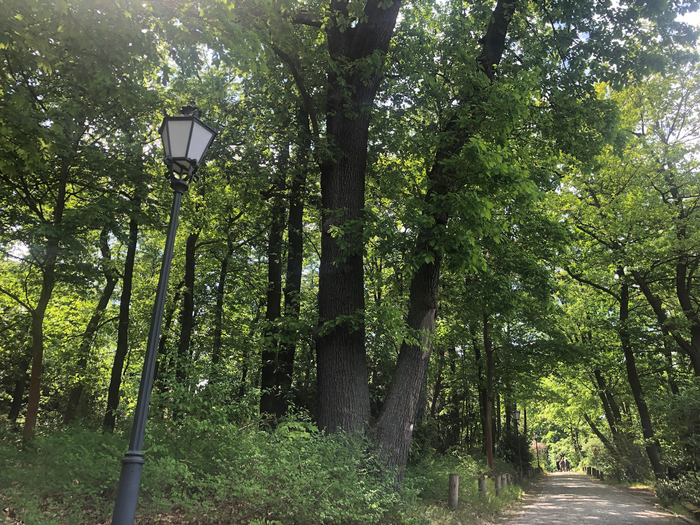Researchers are always questioning how afforestation and restoration of huge areas would impact water fluxes across the globe, and a new study headed by Anne Hoek van Dijke of Wageningen University, with contributions from Martin Herold, GFZ, has fascinating answers.
 Historic forest on Telegrafenberg in Potsdam as part of a heritage site and scientific campus. The study shows that large-scale afforestation has implications beyond country borders and even continents. Image Credit: Josef Zens/GFZ.
Historic forest on Telegrafenberg in Potsdam as part of a heritage site and scientific campus. The study shows that large-scale afforestation has implications beyond country borders and even continents. Image Credit: Josef Zens/GFZ.
Effects on precipitation reach far beyond country or even continent level: tree restoration in the Amazon can, for instance, impact rainfall in Europe and Eastern Asia. The newly performed study has assessed the global impact of large-scale tree restoration on water availability and water fluxes.
The study has been recently reported in the Nature Geoscience journal on May 11th, 2022.
Restauration and planting more trees is seen as viable solution for enhancing carbon storage and the biodiverse functioning of ecosystems. With innovative data and analysis, our interdisciplinary analysis highlights that the hydrological effects are important for how and where such nature-based solutions are more suitable to achieve towards more climate-smart and sustainable future landscapes.
Martin Herold, GFZ German Research Centre for Geosciences, Remote Sensing and Geoinformatics
Herold contributed to the study headed by Anne Hoek van Dijke from Wageningen University & Research.
The scientists assessed the hydrological impacts of the “global tree restoration potential”: a global map stressing 900 million hectares where more trees could grow or be planted in given local climate conditions, and without encroaching on urban and agricultural land.
The increase in evaporation leading to the increased tree cover was evaluated throughout the world at high resolution. The study utilized data-driven models that explain how much rainfall evaporates, and how much goes to streamflow.
These models include a vegetation parameter for forest and non-forest conditions that was calibrated to a range of different evaporation and streamflow measurements. Afterwards, we calculated where, and to what extent, the increased evaporation would return to the land surface as increased precipitation.
Anne Hoek van Dijke, PhD Candidate, Hydrology and Remote Sensing, Wageningen University & Research
Local and Global Shifts in Water Availability
The study outcomes display that large-scale tree restoration could locally increase evaporation per year by almost 10 L on average for every square meter of the restored forest. Locally, in the tropics especially, this effect could be much bigger, with nearly 250 L for every square meter. Critically, not all of this water gets back to the land surface.
Just around 70% of the additional water in the air gets back to the land, while the leftover 30% is shed over the oceans via rain. On a national level, this implies that tree restoration leads to a net decrease in water availability.
For separate river basins, the effect of tree restoration is highly complicated. After tree restoration, streamflow for significant river basins would normally decrease (by up to around 10%).
However, for other river basins (for example, the Yangtze and Amazon river), streamflow reduction will be next to zero since the negative impact of improved evaporation has been compensated by increased rainfall as a result of forests in these areas. Excitingly, few of these basins will probably even gain water.
The outcomes of the study are presented under current climate conditions. Under a warmer climate, the tree restoration ability would decrease. Furthermore, future climate change could increase evaporation and yearly precipitation, thereby impacting global atmospheric circulation patterns.
Journal Reference:
Van Dijke, A. J. H., et al. (2022) Shifts in regional water availability due to global tree restoration. Nature Geoscience. doi.org/10.1038/s41561-022-00935-0.